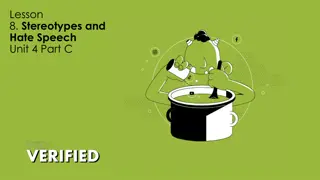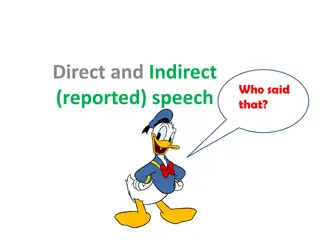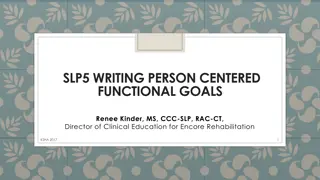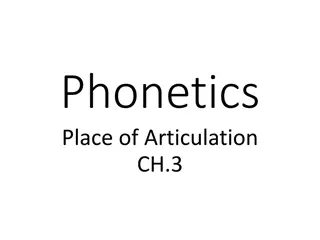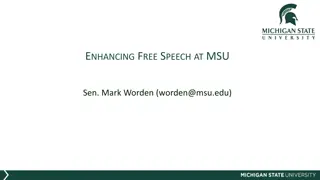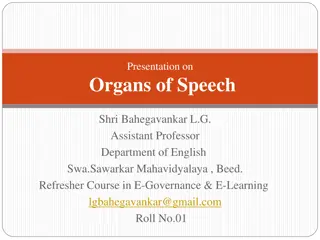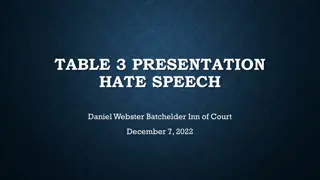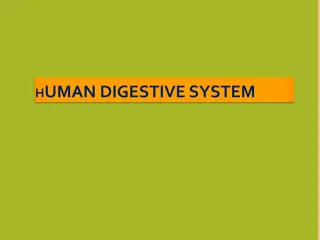How Speech Organs Work in English
Speech in all languages is produced with air from the lungs, which is drawn in quickly and released slowly. The process involves the vocal cords vibrating to produce sound and the role of the larynx in breathing, talking, and swallowing. This detailed explanation delves into the mechanics of speech production through the manipulation of air by the speech organs.
Download Presentation

Please find below an Image/Link to download the presentation.
The content on the website is provided AS IS for your information and personal use only. It may not be sold, licensed, or shared on other websites without obtaining consent from the author.If you encounter any issues during the download, it is possible that the publisher has removed the file from their server.
You are allowed to download the files provided on this website for personal or commercial use, subject to the condition that they are used lawfully. All files are the property of their respective owners.
The content on the website is provided AS IS for your information and personal use only. It may not be sold, licensed, or shared on other websites without obtaining consent from the author.
E N D
Presentation Transcript
UNIT TWO How the speech organs work in English? In all languages, we speak with air from the lungs. We draw it into the lungs quickly and we release it slowly.
THE VOCAL CORDS The air released by the lungs comes up through the wind-pipe and arrives first at the larynx. The larynx contains two small bands of elastic tissue.
Vocal cord: One of two small bands of muscle within the larynx. These muscles vibrate to produce the voice. The vocal cords form.
When the vocal cords are brought together tightly, no air can pass through them, and if the lungs are pushing air from below this air is compressed
If the vocal cords are then open suddenly the compressed air bursts out with a sort of coughing noise.
If the vocal cords are brought together quite gently the air from the lungs will be able to force them apart for a moment, but then they will return to the closed position, then the air will force them apart again, and they will close again.
We use the larynx when we breathe, talk, or swallow. Its outer wall of cartilage forms the area of the front of the neck referred to as the "Adams apple."
Each time we breathe in, air goes into our nose or mouth, then through the larynx, down the trachea, and into our lungs. When we breathe out, the air goes the other way. When we breathe, the vocal cords relax and air moves through the space between them without making a sound.
When we talk, the vocal cords tighten up and move closer together. Air from the lungs is forced between them and makes them vibrate, producing the sound of our voice. The tongue, lips, and teeth form this sound into words


![Prevention and Combating of Hate Crimes and Hate Speech Bill [B.9B.2018]](/thumb/60513/prevention-and-combating-of-hate-crimes-and-hate-speech-bill-b-9b-2018.jpg)
